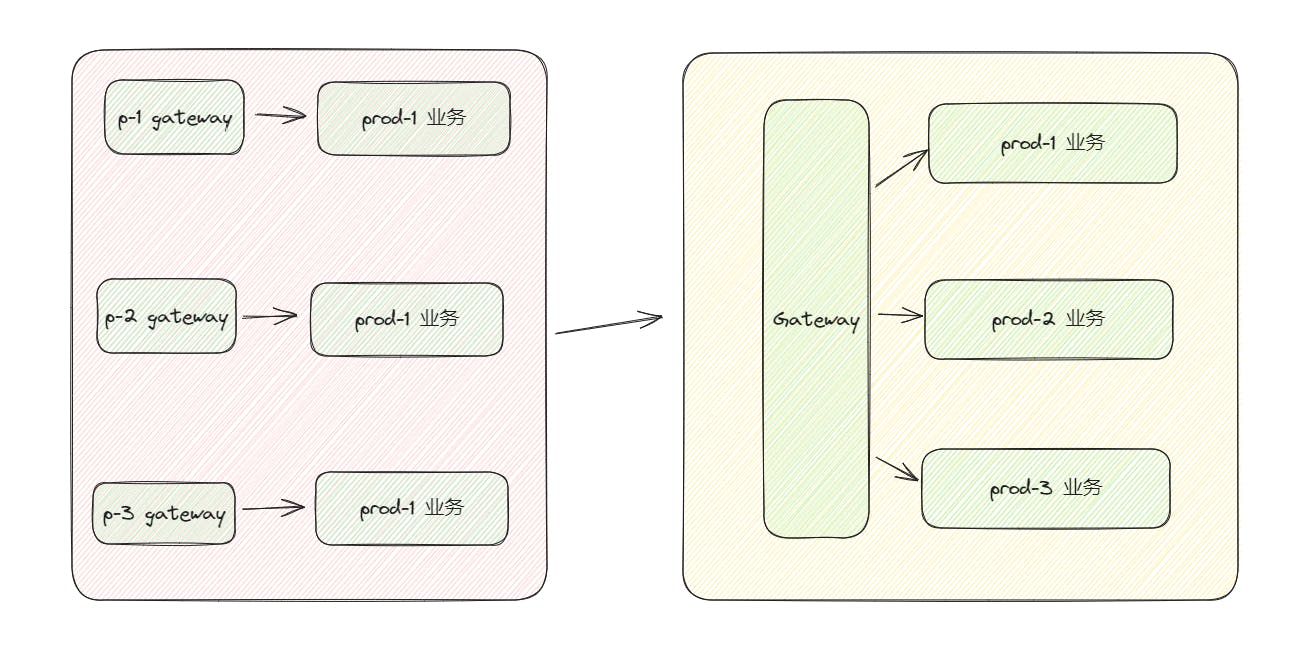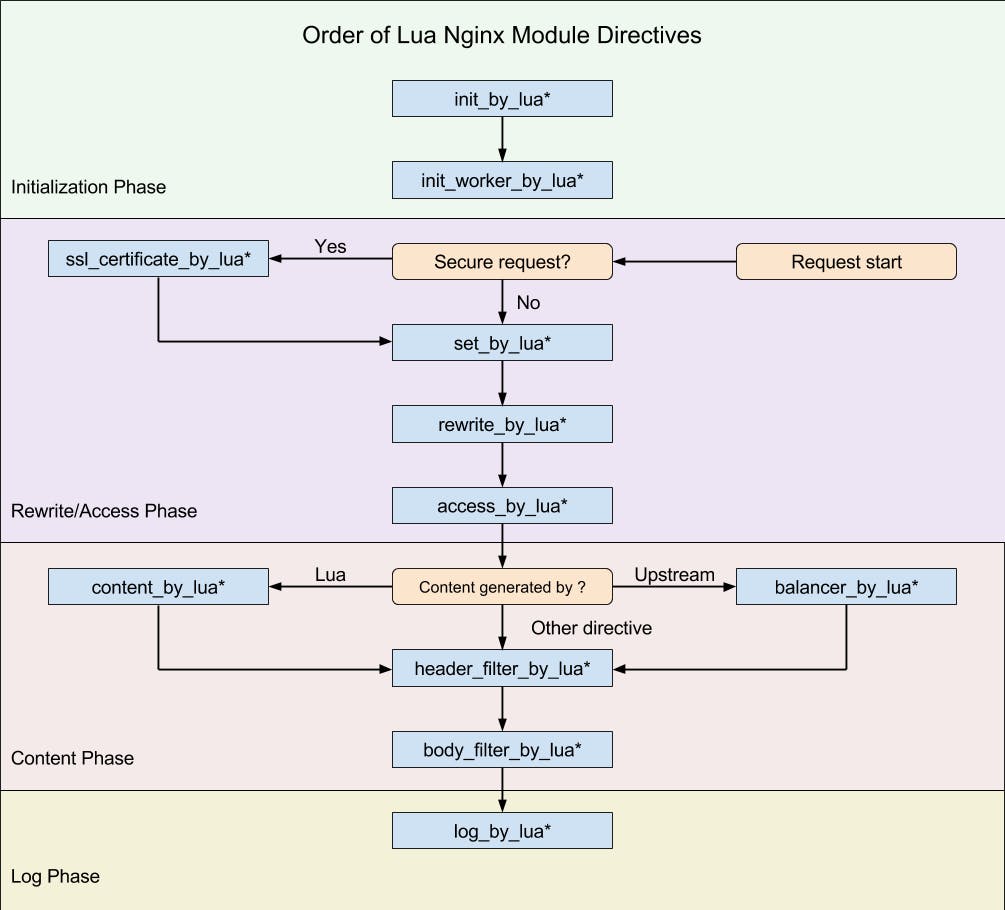
业务背景
业务是 SaaS 产品, 站点标识格式为: uid.(p.domain){n}.com, 客户可自由绑定域名到自己站点.
由于国内特殊原因, 需有境外/境内分别配置, 所以数据库使用 redis 只读实例放在对应代理机.
初期考虑被攻击情况, 所以每个产品分别有境内/境外代理机. 当境内被攻击时, 由 DNSPod 检测某路径是否可用而切换到境外代理机.
单独产品部署时, 原理很简单, 只需要获取 redis 中 Hash数据 产品标识:绑定域名-uid, 获取 uid 之后, 拼接对应产品后缀, 如 uid.p1.domain.com, 设置到 proxy header 即可
例如: www.example.com -> uid.p1.domain.com -> 业务机, redis 中 hash key: p1:www.example.com
ngx.var.realhost = uid .. domainAffixproxy_set_header Host $realhost;但由于现环境原因, 需要把所有产品只保留一个境内/境外代理机, 这需要考虑不同产品的标识后缀, 日志Index等.
开始整合
首先需要获取到域名对应绑定的平台, 按照流量大小排了个序, 放在 config.platforms 中
platforms = {'p1', 'p2', 'p3'}
-- 当初想直接使用 platformAffix 的 key, 结果 lua 的 pair 出来的顺序是不固定的, 就放弃了
platformAffix = {
p1 = '.p1.domain.com',
p2 = '.p2.domain.com',
p3 = '.p3.domain.com'
}下面获取对应平台, 使用 host 参数而不直接使用 ngx.var.host, 是因为 ssl 阶段无法获取 host, 而是 client_hello 中的 server_name, 这样就可以复用函数
function getRecordPlatform(host)
-- nginx.conf 中定义的 `lua_shared_dict platformCache 10m` 缓存
-- 避免频繁查询 redis
local platformCache = ngx.shared.platformCache
local platform = platformCache:get(host)
if platform then
return platform
end
local red = redis:new(config.redis)
-- 避免在 lua for loop 提交请求到 redis
-- 直接使用 redis script 查询完返来.
local res, err = red:eval([[
for i=1,#ARGV do
local platform = ARGV[i]
local host = KEYS[1]
local res, err = redis.call('exists', platform .. ':' .. host)
if res == 1 then
return platform
end
end
return nil
]], 1, host, table.unpack(config.platforms))
if not res then
ngx.log(ngx.ERR, 'get record platform failed: ', err)
ngx.exit(ngx.HTTP_FORBIDDEN)
end
-- set cache, expire after one day
platformCache:set(host, res, 60 * 60 * 24)
return res
end查询域名绑定的对应产品后, 再获取 uid/cert pem/cert key, 使用 uid 设置 Host, 使用 cert pem/cert key 调用 ssl_certificate_by_lua_file 设置证书
-- getUID 中 调用 getRecordPlatform 获取 platform 并设置 ngx.var
local uid = getUID(host)
if uid then
ngx.var.realhost = uid .. config.platformAffix[ngx.var.platform]
ngx.var.uid = uid
end
至此, 需要的变量都已经获取完毕, 在 nginx 配置 rewrite_by_lua_file xxxxx.lua 即可使用设置的变量, 而为什么要放在 rewrite? 看看 Nginx Phases 吧

日志
由于以前都是硬编码到 access_log, 如:
log_format es_log '$remote_addr || $http_host || $request_uri || $http_referer || $http_user_agent || $upstream_response_time || $status
map $status $log2es {
~^[23] 1;
default 0;
}
map $status $log2file {
~^[23] 0;
default 1;
}
# 成功的请求才去日志服务器 (根据对应tag划分)
# 失败的请求保留在本机, 配合 fail2ban 封IP
access_log syslog:server=es-server,tag=p(n) es_log if=$log2es;但多产品整合后, 需要在 log_format 加入对应产品, 由 logstash 再落库
# 根据产品, 增加 log_tag
map $platform $log_tag {
p1 p1index;
p2 p2index;
p3 p3index;
}
# 追加 log tag 给 logstash 分 index
log_format es_log '$remote_addr || $http_host || $request_uri || $http_referer || $http_user_agent || $upstream_response_time || $status || $log_tag';Logstash pipeline:
# ...
filter {
# ...
grok {
remove_field => ["message"]
match => { "message" => "%{IP:ip} \|\| %{HOSTNAME:host} \|\| %{URIPATH:requestURI} \|\| %{GREEDYDATA:referer} \|\| %{GREEDYDATA:ua} \|\| %{NUMBER:responseTime} \|\| %{NUMBER:statusCode} \|\| %{WORD:index}" }
}
# ...
}
output {
elasticsearch {
# ...
index => "%{[index]}-logs-%{+YYYY-MM}"
# ...
}
}题外话
之前无聊也用 Go 为 Caddy 实现过一个插件, 原理也是差不多的. 放在了 Github 🎉
-- Fin --